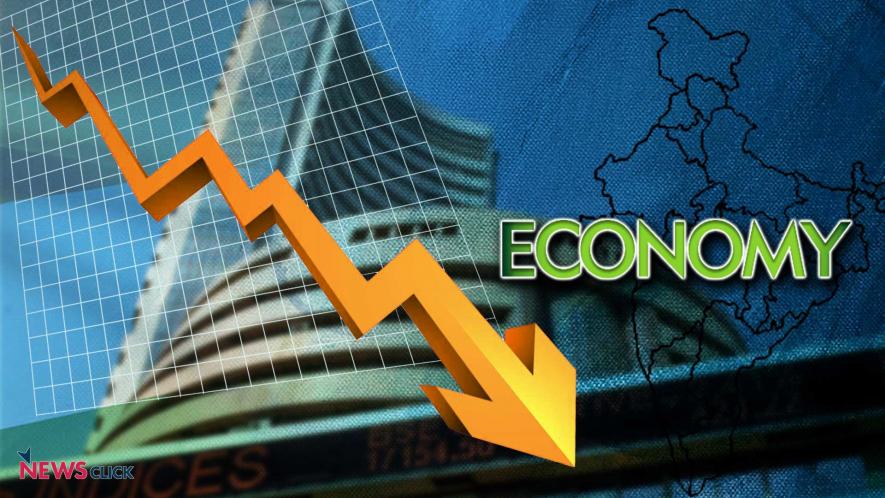Indian Economy: Can All the King’s Men Put it Together Again?

Within days of being sworn in, Prime Minister Narendra Modi’s government set up two Cabinet committees consisting of top ministers -- one to tackle the jobs crisis and the second to address the flagging economic growth. The senior members in both committees have ministers for the last five years in different capacities. Arun Jaitley is no longer Finance Minister so he is out, while Amit Shah is the new entrant to the Cabinet, and to these two committees.
It would be, perhaps, justified to ask how the very same people who couldn’t handle the jobs crisis and messed up the economy earlier would now be able to pull up their socks and do so. But let us leave that cynical doubt aside and assume that the very admission that the jobs crisis needs to be handled is a fresh beginning. So, what do these senior ministers have on their plate?
Government revenues are falling, mainly because tax revenues are falling. This is contrary to all the hype about goods and services tax (GST) and more income tax payees. Total receipts (that is, income or revenues) of the central government as share of gross domestic product (GDP) dipped steadily from a high of 9.4% in 2016-17 to 8.8% in 2018-19, according to the Controller General of Accounts (CGA).
The net tax revenue, after deducting what the central government assigns to states, has declined from 7.2% of GDP in 2014 to 6.9% in 2018-19, as per CGA. In fact, as the chart below shows, in 2012-13, the net tax revenue was much higher at 7.5% of GDP.
In fact, revenues from central taxes in 2018-19 are about Rs.1.67 lakh crore short of the Revised Estimates (presented on February 1, this year), according to Surajit Mazumdar, professor of economics at Jawaharlal Nehru University. Since revenues are short, the government had been cutting expenditure, obsessed as it was with keeping the deficit down.
“In order to meet the deficit target, central government expenditure has been cut to 94% of the original projected expenditure -- and almost half of this has been achieved by slashing food subsidies,” explains Mazumdar.
Restrained government expenditure was, in fact, a policy of the Modi 1.0 government (see chart below). In 2014-15, when Modi took over as Prime Minister, central government expenditure shrank from 13.9% of GDP to 13.2%. Since then, it has been downhill all the way, to just 12.2% in 2018-19, as per CGA data.
And, what about the great private sector? “Investment and credit growth has been subdued for a long time -- which are also indicative of lack of rapid expansion of productive activities which would generate expansion of employment,” says Mazumdar.
Plant and machinery assets of the private corporate sector grew by 5.7% in 2016-17 and 7.1% in 2017-18, according to CMIE. During the first four years of the Modi government, the average annual growth of plant and machinery of the private sector was 9.2%. Under Congress-led United Progressive Alliance-II it was 13%, and under UPA-I it was 19.5%. This means the private sector is not investing in productive capacities.
All this put together leads to flagging economic growth, but more crucially, rising joblessness. According to CMIE, for the January to April period, the share of unemployed has risen from an already high level of 7.66% in 2017 to a whopping 9.35% in 2019. This includes all those who are above 15 years, unemployed and willing to work.
What Needs to be Done?
It is clear that the previous Modi government had no clue about how to go about tackling either job creation or increasing manufacturing output. That’s tragically reflected in their faith in providing skills to lakhs of youth or giving out easy loans to ‘entrepreneurs’ in the hope that this would boost both. In reality, this twin strategy has bombed spectacularly. That’s because they never understood the root of the problem.
“The fundamental problem is one of inadequate demand that keeps reproducing itself. Too many have too little to spend because they don't have jobs or have jobs that pay them very little. In such circumstances, even those who have the means to spend, don't direct this spending to productive investments that would create more and better jobs,” says Mazumdar.
“This vicious cycle can only be broken if there is some exogenous expansion of demand. Since exports are not providing such a stimulus, the government stepping up its expenditure is the only way out. If it does spend and spend well, the expansionary effects of that on the economy would also increase the base for generating additional tax revenues,” he adds.
In other words, what is needed is a policy that is the reverse of what has been followed till now. Instead of cutting government spending, it needs to be expanded. This will help boost jobs and put purchasing power in the hands of people. Hence it will spur more investment in productive capacities. Which will create more jobs….and so on.
Are the new Cabinet Committee members ready for this? Or are they still stuck with the global dogma of cutting public spending to “allow” private investment to expand?
(Peeyush Sharma assisted in data processing).
Get the latest reports & analysis with people's perspective on Protests, movements & deep analytical videos, discussions of the current affairs in your Telegram app. Subscribe to NewsClick's Telegram channel & get Real-Time updates on stories, as they get published on our website.






















